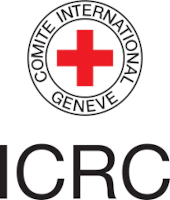The Potential of Mini Grids and Critical Factors
Overview
The following article details the proceedings of the Micro Perspectives for Decentralized Energy Supply Conference - 2013.
Universal energy access remains a challenge despite being essential in enabling human development. There are 1.3 billion people without electricity worldwide (International Energy Agency [IEA], 2011) while electricity is the essential basis for the improvement of elementary needs, like light, communication, education, health and safety. Further, electricity has been repeatedly linked to poverty reduction.
Over 80% of the 1.3 billion lacking electricity live in rural areas and therefore, self-sustaining island systems (mini-grids) are mostly the only possibility to bring electricity and to grow local economy. In consequence of rising fuel prices, renewable energies have become more interesting to bridge the energy gap.
Comprehensive Country Ranking for Renewable Energy Based Mini-Grids Providing Rural Off-Grid Electrification
Presentation by C.Breyer - Reyer Lemoine Institut
Motivation
Mini-grids offer ideal conditions for a grid independent electricity supply. When they are renewable energy based, become a key element for rural electrification. Nevertheless there is not only a necessity of sustainable business models for energy supplying of hundreds of millions of people, but also a comparison of all countries need to be done in order to identify the most important players on this field.
Methodology for the Country Ranking
The methodology for the study was aimed to identify the hugest market potential and the best political and financial environments. Due to this the next exclusion criteria and their respective weighting was considered:
- Electrification rates over 95 % and less than 200,000 people in rural areas without electricity (98 countries excluded)
- High political instability (considering the travel warning issued by the German Ministry of Foreign Affairs – April 2012 – and the worldwide governance indicator < 5%).
- Very low diesel prices
- Criteria not included:
- No quantification possible
- Not available on a global scale
Weighting and Scoring of Each Criterion
The weighting and scoring of each criterion was proposed by the authors as follows:
A: Market potential [40 %]
• 30 % - Electrification rate [World Bank, IEA, UNDP]
• 50 % - Rural population without access to electricity [calculated]
• 20 % - Pump price for diesel fuel [World Bank]
B: Political and financial environment [60 %]
• 15 % - Political stability [World Bank]
• 20 % - Corruption perceptions index [Transparency Int]
• 15 % - Inflation [World Bank]
• 50 % - Ease of doing business index [World Bank]
Results of the Country Ranking Considering the Proposed Criterion
|
Rank |
Country |
Electrification rate [%] |
Rural population without access to electricity |
Worldwide governance indicators: political stability [%] |
Pump price for diesel fuel [USD/liter] |
GDP per capita [USD] |
|
1 |
Rwanda |
5 |
8.5 mio |
41.5 |
1.62 |
530 |
|
2 |
Zambia |
19 |
8.0 mio |
63.7 |
1.52 |
1,250 |
|
3 |
South Africa |
75 |
8.6 mio |
44.3 |
1.14 |
7,280 |
|
4 |
Botswana |
45 |
0.7 mio |
78.3 |
0.97 |
7,400 |
|
5 |
Namibia |
34 |
1.2 mio |
71.7 |
1.09 |
5,330 |
|
6 |
Ghana |
61 |
9.1 mio |
47.6 |
0.83 |
1,320 |
|
7 |
Kenya |
16 |
29.9 mio |
13.7 |
1.27 |
790 |
|
8 |
Uganda |
9 |
27.8 mio |
15.6 |
1.11 |
510 |
|
9 |
United Republic of Tanzania |
14 |
32.3 mio |
45.8 |
1.19 |
520 |
|
10 |
Peru |
86 |
5.9 mio |
20.3 |
1.10 |
5,400 |
Conclusions
The study reveals that:
- Good political and financial environment combined with high electrification needs are to be found especially in South and East Africa.
- Large market potential and poor political and financial environment are often found coupled and vice versa.
Potential of Mini-grids and Critical Factors
by Dr. Teodoro Sanchez of Practical Action UK
Based on practical studies and own experience, the Dr. Tedoro Sánchez of Practical Action identified the critical and important factors for the performance of small stand alone systems in rural areas:
|
Critical Factors |
Important factors |
|
a) Local context |
a) Local context |
|
Management Local capacity |
• Effective bill collection • Household benefits from electricity • Load factor • Capacity to pay • Cost of energy • Community participation • Low connection cost • Source of energy • Ownership • Political interference |
|
b) National Context |
b) National context |
|
Technical Assistance |
• Degree of development of the village • Market connection • National capacity • Legal framework • Bureaucracy • Proper tax frame |
New management models which build the capacity of communities to operate and manage energy schemes needs to be introduced in rural areas.
An Objectives Analysis for Improved Holistic Design of a Rural Electrification System
By Maizaklah Ayu Abdullah
Introduction and Motivation
Energy access programs should not focus on merely providing electricity services, but on delivering human development impacts. Existing approaches to rural electrification are oftentimes fragmented and leads to poorly designed systems. Integrating the rural electrification system’s social, technical and financial aspects calls for a more holistic design process, where the understanding of end user requirements and using their participation could lead to an instrument to achieve high-level goals of capability enhancement.
Methodology
In order to understand the expansion of system boundary including human capabilities and to incorporate human development goals in the earlier stages or rural system design process, a field work was carried out in Tonibung, Buayan. This community has a community-based Micro-hydro power plant. After the field work and to merge human development theory with engineering design process the Systems Engineering Modeling Language (SysML) was used. It depicts graphically the decomposition of a rural electrification system (Technical and social); allows to identify the main issue (Top level); has an expanded view of the system and keep track of the capabilities, needs and opportunities.
Results
The upper level of the SysML diagram represents the main system value. By solving lower levels this main value could be reached. The SysML allows as well to identify where the technical skills, knowledge transfer, Local institutions & Management skills, Environmental resource management, Technical artifact, Lowering costs and Economic activities are located.
Conclusion
It was presented a learning tool for the management of the energy use in order to make not only a change of the point of view of just giving electricity access, but also go give and develop full integrated solutions with energy management systems.
Designing a Sustainable Model for Financial Viability of Decentralized Bio-fuel Based Power Projects
By Debajit Palit
Introduction and Motivation
The study was carried out under the OASYS project, which have the objectives of having a cost effective and reliable off-grid electricity supply and assessing if local solutions have a scaling up and reproducibility.
The design of this model includes an analysis from the perspective of all key stakeholders: Project Implementing Agency: evaluate the techno-economic viability of SVO system based mini-grids to provide rural electricity services; Government: assess the financial burden of subsidies for making electricity affordable as compared to extending the central grid for rural electrification and the consumers: tariff within the payment capacity for availing the electricity services.
Methodology
The design of the system was analyzed with different mechanism and includes also possible solutions for its deployment:
- Estimation of Minimum Desired Price (MDP) of electricity under different operating conditions for ensuring viability of SVO systems
- Based on actual field performance data collected from a number of projects implemented under VESP
- Finding MDP from a consumer’s perspective and viability gap analysis to estimate any gap
- Possible mechanisms to bridge the gap and suggest breakeven price under different scenarios
- Suggests an integrated approach for ensuring long term ‘sustainable electrification’ with SVO systems as an option in the remote rural areas
Conclusion
The model has a huge potential to generate employment through biofuel plantation and processing to enhance local income and at the same time generate electricity to serve the same area. But a sustainability condition taking into account the next points has to be present: Enabling policy, appropriate technology, local skills and innovative financing.
Further Information
Read more in the Discussion and Answer Session.
More information can be found at </span>Micro Perspectives for Decentralized Energy Supply Conference - 2013



















